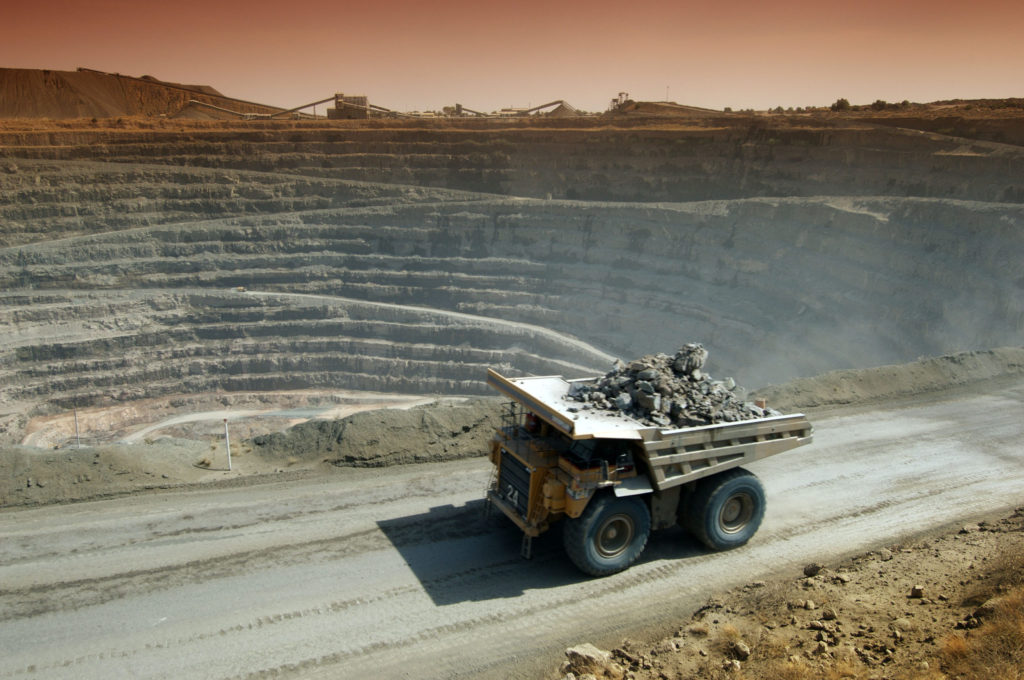Spotlight on foundation failure in rock slopes


John Kwofie, principal geotechnical engineer in SRK Consulting’s Ghana office, recently delivered a keynote address to the recent Rocscience Africa Conference 2022 in Accra. In his speech, he provided some technical insights into slope failures in the mining sector.

While slope failures in open pit mines occur mainly due to kinematic instability or shear stresses within the slope exceeding rock mass strength, the concept of foundation failure - according to Kwofie – can prove useful in cases where ground profile anomalies occur. Kwofie noted that he had encountered three instances over a span of a decade, where the cause of slope failure could not be determined using the usual well-known methods.
“In these cases, slope stability analyses conducted on the slope design showed that the factor of safety (FoS) was above the recommended minimum value,” he said. “At the same time, analyses of the orientations of geological structures did not point to any kinematic admissibility.”
Nevertheless, he said, the slope had failed – and it was difficult to recommend remedial measures because the cause of failure had not been established. After close observation, though, it appeared that the ground profile was not typical. Instead, it was found that that there was weak material embedded within strong layers below the toe elevation of the slope – such as completely weathered layers in otherwise unweathered rock.
“The weak foundation material appeared to be over-stressed, evidenced by the heaving of the ground at the toe of the slope failure as encountered in general geotechnical shear failure,” he said. “Reassessment of the cause of instability – from the perspective of bearing capacity failure – made it easier to see why the slope would fail when conventional methods did not predict such behaviour.”
One of the instances was a footwall slope failure at an open pit zinc mine in India, which occurred over a north-south strike length of about 100 metres. The northern end of the collapse was bordered by a fault while the southern border appeared like a broken cantilever support, with shearing through the failed rock mass at that end.
“The failure began with the appearance of cracks on the slope as mining progressed,” said Kwofie. “All efforts to determine the cause of the sudden impending multi-bench failure proved futile – until the 320 to 310 metre bench was being mined, and a weak zone of weathered biotite of soft clay consistency about 25 metres wide was found adjacent to the fault in fresh rock.”
The mining of the weak zone resulted in acceleration of slope movement. This ended in a tilted, failed rock mass which slumped towards the weathered biotite zone and truncated at the fault like a broken cantilever. These observations suggested that the failure was likely caused by settlement within the weathered biotite zone.
“At least three metres of settlement was observed within the weathered biotite material near the fault, and significant movement occurred adjacent to the fault,” he said. “On each berm, the portion adjacent to the fault was depressed more than areas further away.”
He explained that the differential settlement caused by this zone of weathered biotite in a fresh rock material must have caused tensile stresses in the surface of the affected rock mass – resulting in cracks in the slope that led to failure. Significantly, the failure stabilized below the 310-metre elevation once mining exited the weathered biotite zone.
Kwofie noted that the existence of weak and compressible materials within competent rock introduces different stress behaviour into slope stability. Differential settlement introduces tensile stresses into the rock mass causing cracking and dilation, which lead to failure that would not have occurred if not for the ground profile anomaly.
“The excavation of the pit itself results in a progressive loss of confining pressure in the weak compressible material underlying the slope, making it even weaker,” he argued. “Even though the stresses on a weak foundation material are unlikely to increase, the reduction in the strength of the material with mining – due to the loss of confining pressure – is analogous to increasing loading intensity.”
The decrease in confining pressure, which occurs as a result of mining, leads to differential settlement in anomalous ground profile and ultimately loss of bearing capacity – causing slope failure.
The solution starts with awareness of the potential impact of foundation instability on slope stability, and incorporating this into slope stability analyses where required. Slope stability modelling that includes any inherent weakness in the existing slope foundation is more likely to simulate actual field conditions and provide a more reliable factor of safety than analysis that does not that take foundation conditions into consideration. Adopting this approach would help design more stable slopes.
“Slowing down the excavation rate during mining may help, as this could allow weaker foundation material to adjust to the stress relief associated with the overburden mining,” he concluded.
For more information, visit www.SRK.com.
Comments